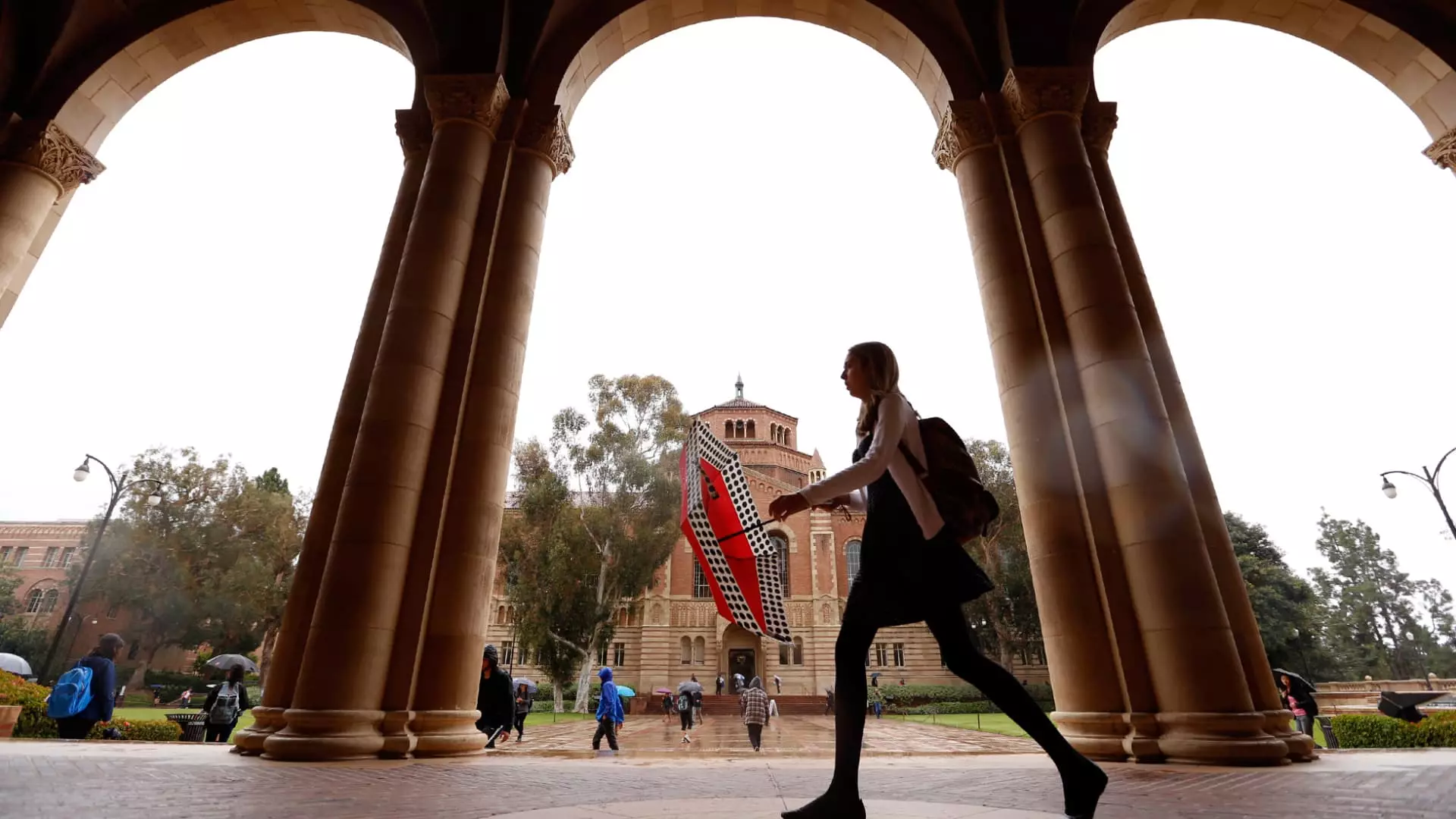Recent reports indicate a paradox in higher education in the United States; while the number of students qualifying for federal financial aid has risen, the interest in pursuing a four-year college degree has diminished. The National Student Clearinghouse Research Center disclosed that undergraduate enrollment overall has shown an uptick, yet the number of incoming freshman has decreased by 5% from the previous year. This trend has sparked alarm, particularly as institutions serving low-income populations experience staggering declines. Furthermore, the heightened cost of college and the persistent burden of student debt continue to fuel skepticism regarding the value of a four-year degree—a sentiment that is profoundly affecting enrollment decisions among high school graduates.
With college costs skyrocketing—reaching nearly $100,000 a year at certain institutions—many families are finding higher education increasingly financially elusive. The stark realities of tuition hikes, combined with the limited purchasing power of financial aid packages, have created a precarious situation. Although recent changes to the Free Application for Federal Student Aid (FAFSA) aimed to render financial assistance more accessible, results are mixed at best. Data from the Department of Education indicates a 10% increase in Pell Grant eligibility, yet the total number of Pell Grant recipients has plummeted by 32% since its peak a decade ago.
This significant decline raises questions about the sustainability of federal financial aid programs. For many students, the financial aid they receive does not align with the ballooning costs of attendance, prompting families to second-guess their financial commitment to a four-year degree. For instance, while the maximum Pell Grant award has recently seen a nominal increase to $7,395, tuition and associated fees for private four-year institutions have outpaced this amount significantly. It is clear that while financial products are available, they are often insufficient.
Higher education experts have expressed concerns regarding the recent overhaul of FAFSA, which was designed to simplify and streamline the application process. Instead, it appears that this year’s changes have inadvertently contributed to a decline in financial aid applications. Mark Kantrowitz, a noted authority on student aid, pointed out that frustrations with the FAFSA application process have discouraged many students from seeking assistance, pushing them toward alternative educational pathways such as community colleges or vocational training. Surveys indicate that 45% of college applicants reported significant challenges in filing for financial aid, and subsequently, 12% opted for non-traditional education routes due to their experiences with the process.
This trend reveals an unsettling reality: many academically capable students may be avoiding the complexities of financial aid and ultimately the pursuit of a four-year degree altogether. As frustrations continue to mount, institutions are facing a dual challenge—attracting students while also ensuring that they are adequately supported throughout their educational journey.
As traditional college enrollment wanes, the appeal of alternative educational opportunities is soaring. Enrollment in non-degree programs, particularly certificate programs, has surged by 7.3%, signaling a crucial shift in student priorities. This pivot suggests a growing recognition among students that short-term career-focused training may yield a faster, more tangible return on investment than a time-consuming and costly four-year degree. Encouraged by the promise of job readiness, more students are now gravitating toward certifications that can enhance their employability without the weight of substantial debt.
Jamie Beaton, co-founder and CEO of Crimson Education, articulated the growing skepticism regarding the utility of a degree in today’s job market. As employers become increasingly focused on skills rather than degrees, students are re-evaluating their options, leading to an influx of participants in vocational training and short-term certifications.
The changing landscape of higher education poses significant questions about its future trajectory. As more students weigh their options—considering the merits of traditional versus alternative pathways—the call for systemic change in how we approach college education becomes imperative. Policymakers and higher education institutions must work collaboratively to enhance financial aid accessibility and transparency, ensuring that students can make informed choices regarding their educational paths.
Overall, the disparities in enrollment trends underscore the need for innovation within educational financing and delivery. As we navigate these complexities, fostering a system that supports and empowers students across a spectrum of backgrounds should remain at the forefront of discussions in academia and beyond. Ultimately, the future of higher education hinges on its adaptability in addressing the realities faced by today’s students.

